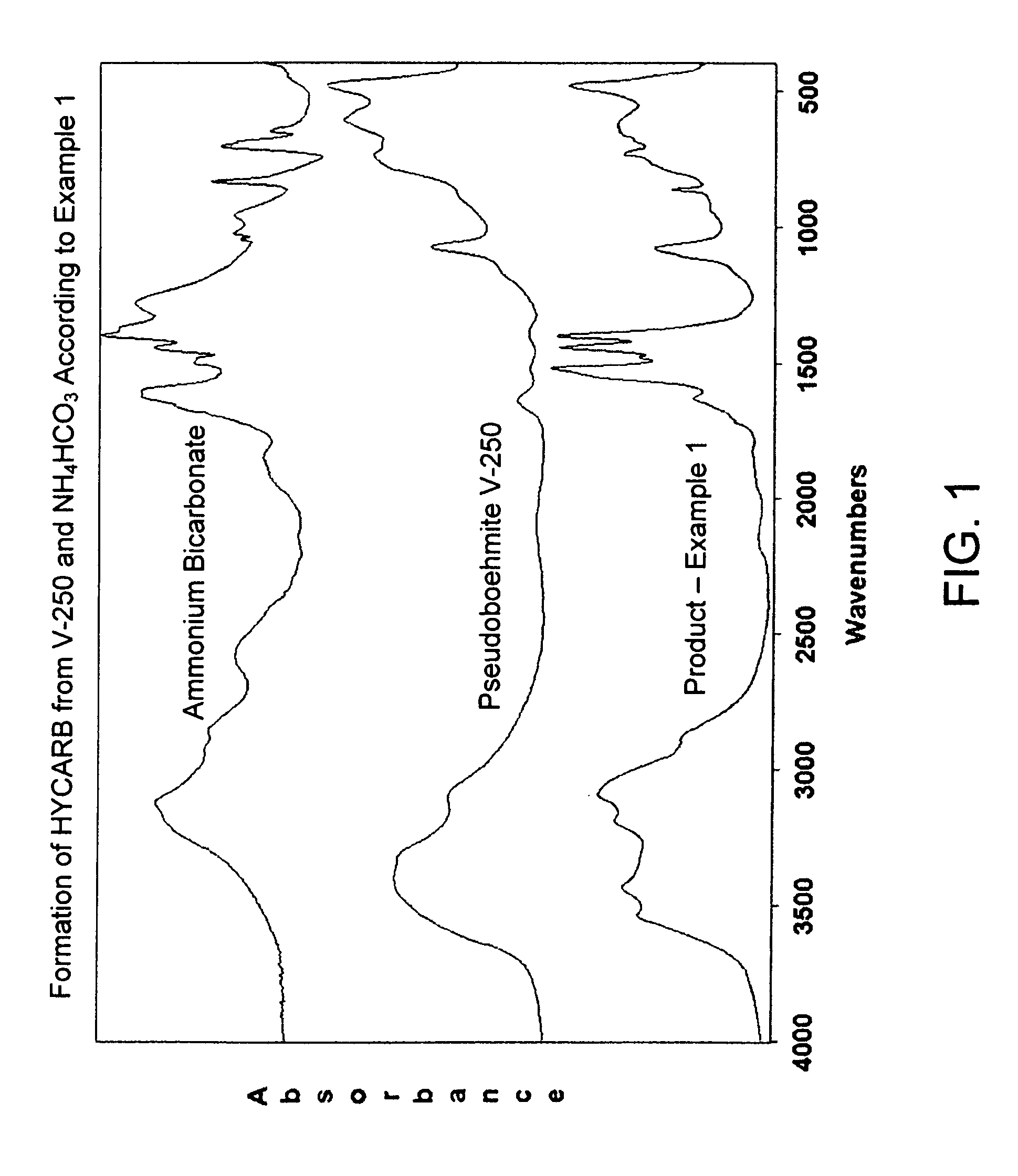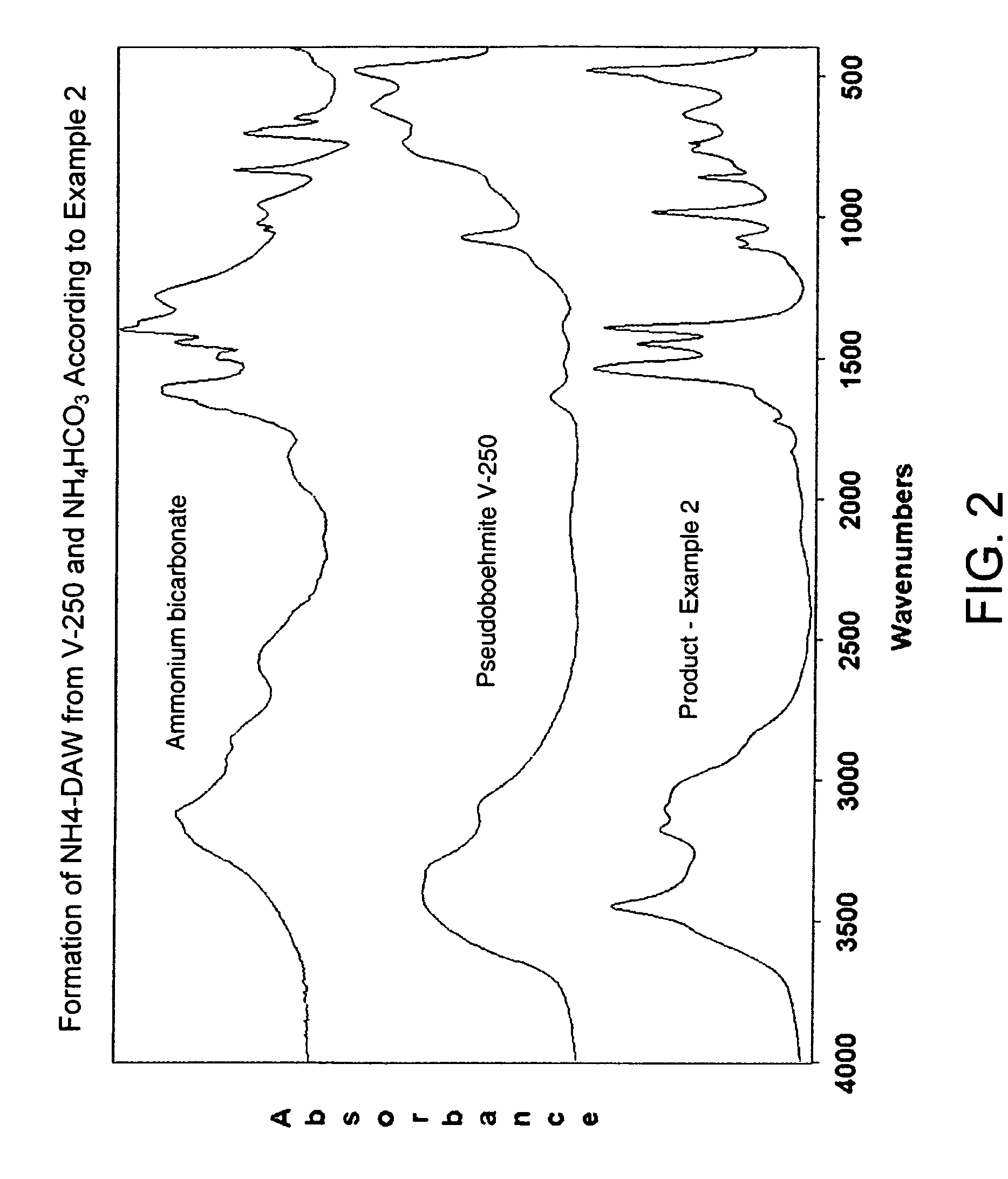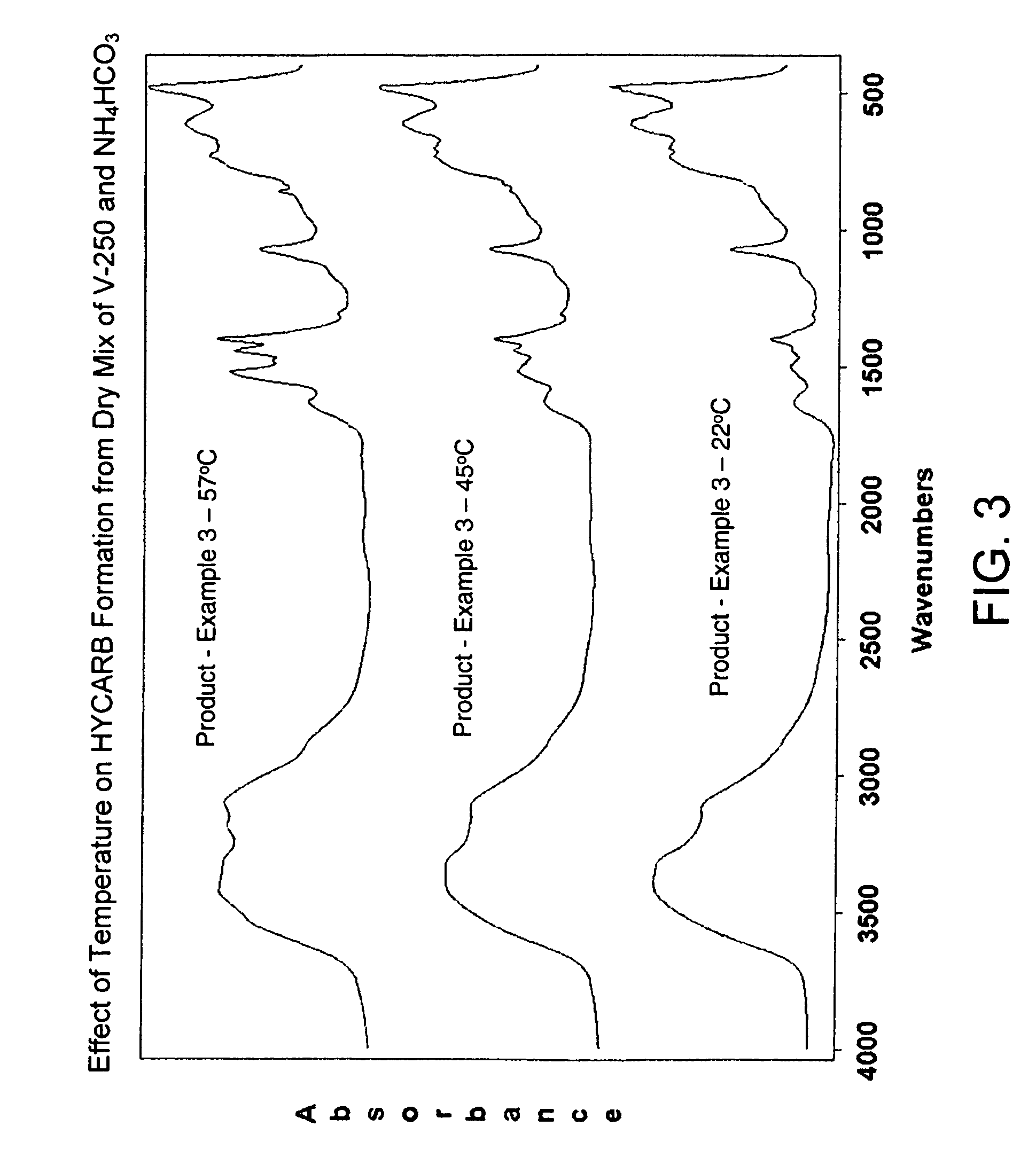Process for conversion of aluminum oxide hydroxide
a technology of aluminum oxide and hydroxide, which is applied in the direction of aluminum-carbonate compounds, inorganic chemistry, aluminum compounds, etc., can solve the problems of loss of bet surface area and pore volum
- Summary
- Abstract
- Description
- Claims
- Application Information
AI Technical Summary
Benefits of technology
Problems solved by technology
Method used
Image
Examples
example 1
[0016]About 100 g powdered ammonium bicarbonate and an equal amount of Versal-250 (V-250) pseudoboehmite alumina powder, produced by UOP LLC, Des Plaines, Ill., were mixed together in a blender for about 10 minutes. The mixture was then subjected to curing at about 60° C. in a closed container whereas the pressure in the container as determined by the decomposition pressure of NH4HCO3 reagent is estimated to amount about 90 kPa. FTIR spectra of the powder mix using KBr technique showed after about 4 hours appreciable formation of a hydroxycarbonate species tentatively named here HYCARB. The species exhibits somewhat similar FTIR patterns to ammonium dawsonite NH4Al(OH)2CO3. FIG. 1 shows FTIR spectrum of the HYCARB product after 72 hours of curing compared with the spectra of the source components. A rough estimate suggests that at least 30% of the source V-250 material has been converted to HYCARB.
example 2
[0017]The procedure described in Example 1 was used except that the product cured at about 60° C. for 24 hours was additionally cured at 78° C. for about 12 hours. The FTIR spectrum of this product presented in FIG. 2 matches closely that of ammonium aluminum hydroxycarbonate (ammonium dawsonite)-NH4Al(OH)2 CO3 (NH4-DAW) About 45% of V-250 converts to NH4-DAW under these conditions.
example 3
[0018]About 396 g powdered ammonium bicarbonate and an equal amount of V-250 pseudoboehmite alumina powder was mixed in a plastic container of about 2 liters volume. The container was shaken and rolled by hand for about 3 minutes to homogenize the mix and the resulting powder was divided in three equal parts placed in separate plastic containers. The samples were then sealed and cured at different temperatures—22° C. (room temperature), 45° C. and 57° C. All the samples produced a material which FTIR spectrum is similar to the hydroxycarbonate species tentatively named HYCARB in Example 1. FIG. 3 shows that the HYCARB content in the product as determined by the intensity of the FTIR peaks in the spectral range from about 1200 to about 1800 cm−1 increases with the temperature. All data are for the product samples after 24 hours curing time.
PUM
| Property | Measurement | Unit |
|---|---|---|
| temperature | aaaaa | aaaaa |
| temperature | aaaaa | aaaaa |
| temperature | aaaaa | aaaaa |
Abstract
Description
Claims
Application Information
 Login to View More
Login to View More - R&D
- Intellectual Property
- Life Sciences
- Materials
- Tech Scout
- Unparalleled Data Quality
- Higher Quality Content
- 60% Fewer Hallucinations
Browse by: Latest US Patents, China's latest patents, Technical Efficacy Thesaurus, Application Domain, Technology Topic, Popular Technical Reports.
© 2025 PatSnap. All rights reserved.Legal|Privacy policy|Modern Slavery Act Transparency Statement|Sitemap|About US| Contact US: help@patsnap.com



